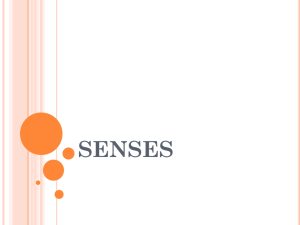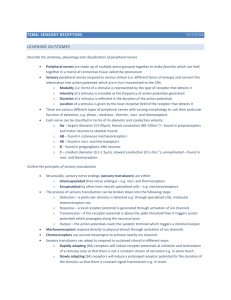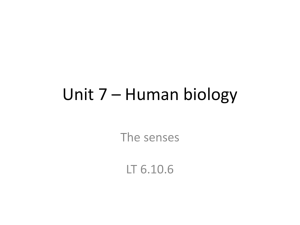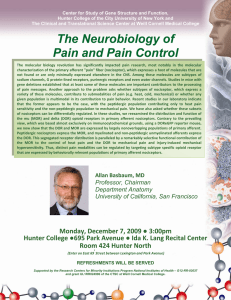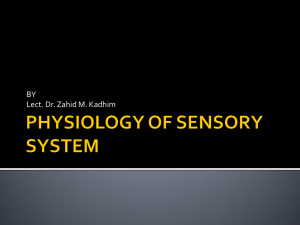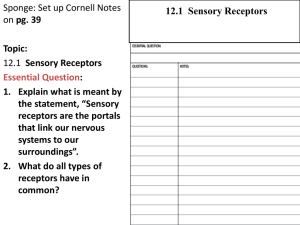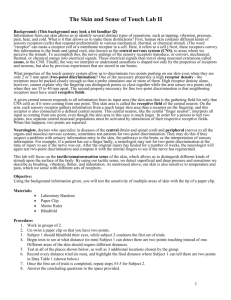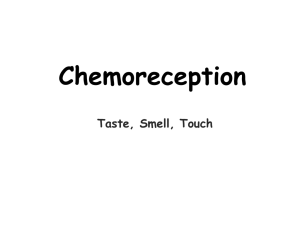Human Touch and Pain Receptors
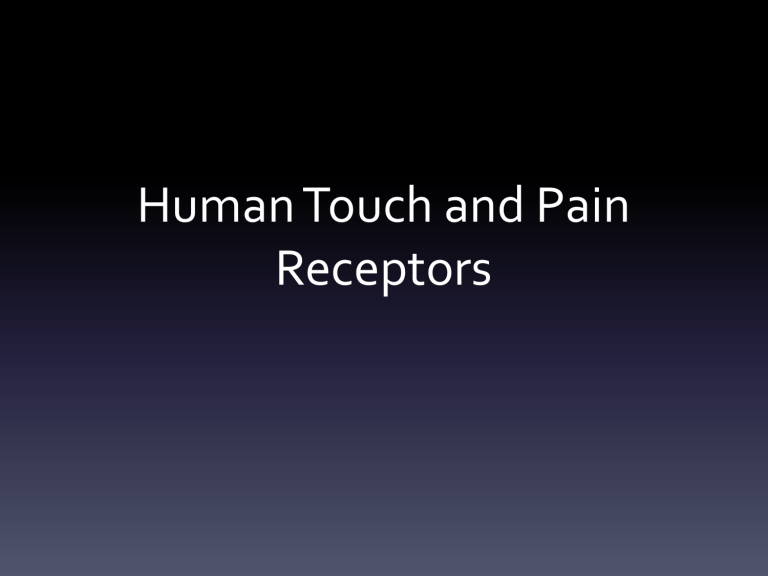
Human Touch and Pain
Receptors
Somatosensory System
• Somoesthetic sensations
– Sensations associated with skin receptors
• Proprioception
– Perception and position of the body including limbs
3 Receptor Types
• Mechanoreceptors
– Pressure, force, vibration
• Thermoreceptors
– Temperature
• Nociceptors
– Tissue damaging stimuli
Definitions
• Modality
– Energy form of stimulus
• Sensory neurons convert energy from stimulus into another form of energy.
• Receptor potentials
– Graded responses caused by closing and opening of ion channels.
– Number activated and frequency of APs generated correlated to stronger stimulus intensity perceived.
Mechanoreceptors
• Detect stimuli
• Two main forms:
– Specialized structure on peripheral end of afferent neuron.
– Separate cell that communicates via chemical synapses with associated afferent neuron.
Thermoreceptors
• Respond to surrounding tissue, not air temp.
• Warm receptors
– Respond to temps 35-45 °C
– Beyond 45 °C APs decrease rapidly
– Above 45 °C nociceptors also.
Thermoreceptors
• Cold receptors
– Respond to to temps 20-35 °C
– Below 25 °C APs decrease rapidly
– Below 10 °C also nociceptors
– Also respond to temps above 45 °C
• Paradoxical cold receptors
Nociceptors
• 3 Types
– Mechanical
– Thermal
– Polymodal
Wet Receptors?
• Brain integrates info from different sensory systems.
• Combination of thermoreceptors and mechanoreceptors.
Receptor Density
B ody Part Receptor Density (cm 2 )
Fingertip, palm surface
Back of finger
One eye
60 pain, 100 touch
100 pain, 9 touch
90,000,000!!!!!!!!!
Homework!!!!
• Write a methods, results, and introduction.
• Answer ALL questions.
• This may be done within the results section or introduction.
Make sure you include a section with answers to questions that you don’t answer within the intro or results sections.
• You do not have to replicate the figures from the pdf for today. Just staple that to your lab report.
Introduction
• Successfully establishes the physiological concepts of the lab.
• Effectively presents the objectives and purpose of the lab.
• States hypotheses AND provides logical reasoning for them.
